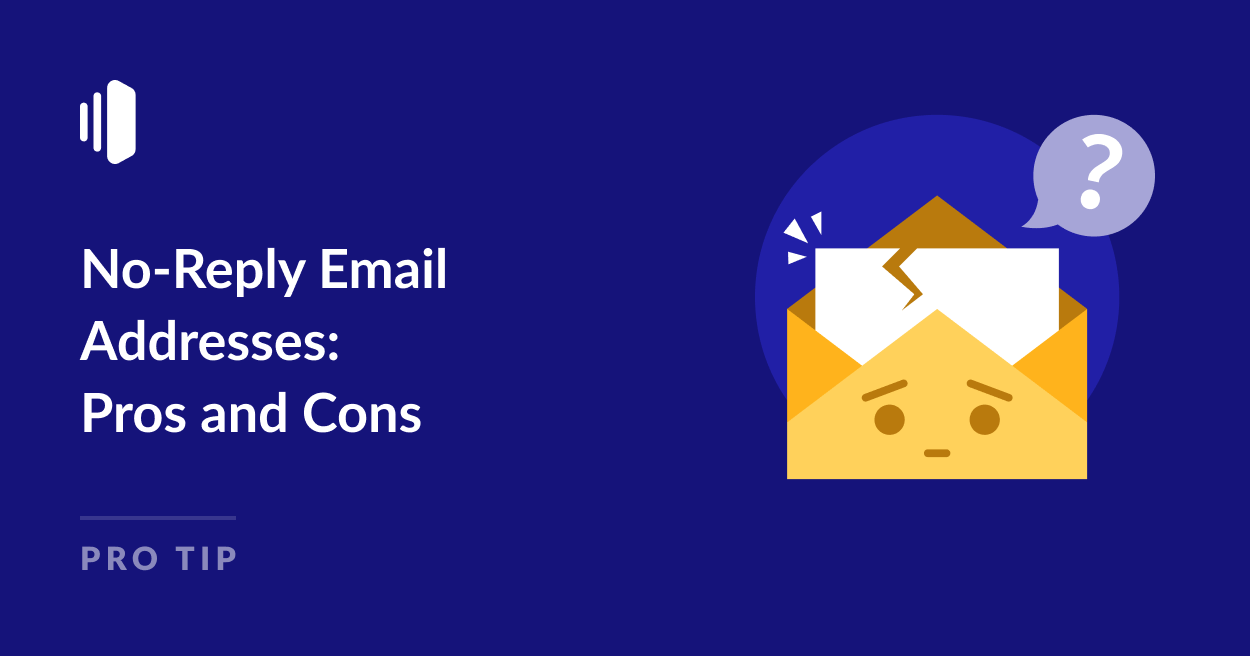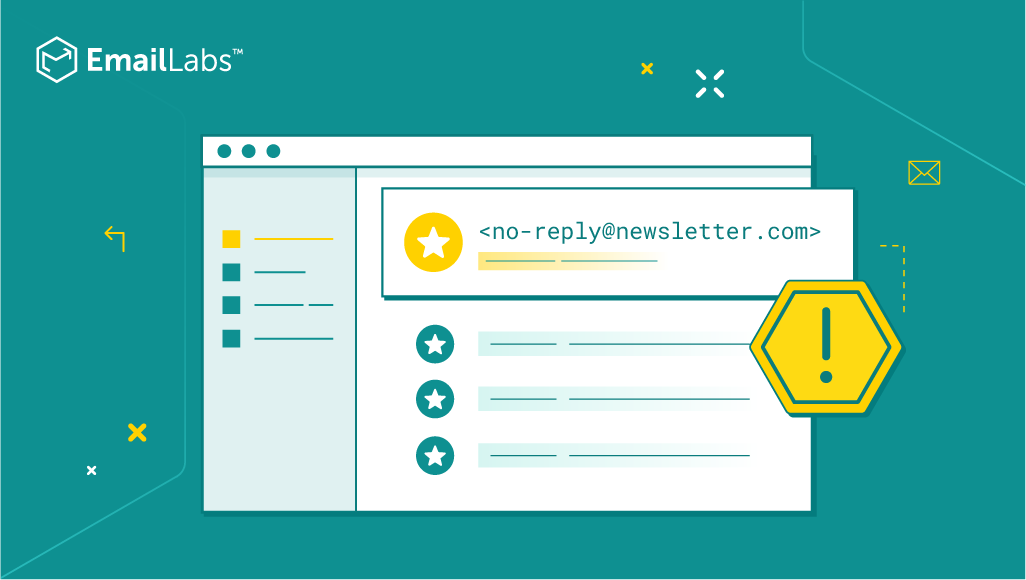Summary
The consensus among experts and marketers is that using 'no-reply' email addresses can negatively impact both customer experience and email deliverability. These addresses are often perceived as rude and impersonal, discouraging customer engagement and hindering the ability to address concerns. From a technical standpoint, 'no-reply' addresses prevent valuable feedback loops, block bounce notifications, and can damage sender reputation by signaling to ISPs a lack of interest in communication. Consequently, it's widely recommended to use a monitored email address that allows for interaction, fostering better customer relationships and improving overall deliverability.
Key findings
- Customer Perception: 'No-reply' addresses are often seen as rude and impersonal, leading to a negative customer experience.
- Deliverability Impact: 'No-reply' addresses can negatively impact email deliverability by preventing feedback loops, blocking bounce notifications, and damaging sender reputation.
- Lost Engagement Opportunities: 'No-reply' addresses limit customer engagement and prevent recipients from easily providing feedback or reporting issues.
- Lack of Trust: ISPs may view senders using 'no-reply' addresses as less trustworthy.
Key considerations
- Monitor Inboxes: Use and actively monitor a real email address to respond to customer inquiries and concerns promptly.
- Facilitate Feedback Loops: Encourage recipient interaction to provide valuable feedback and improve sender reputation.
- Ensure Bounces are Processed: Avoid blackholing or ignoring bounce notifications to maintain a clean sending reputation.
- Use a Helpdesk: Direct customer replies to a helpdesk or support system to ensure issues are addressed efficiently.
- Offer Easy Unsubscribe: Provide a straightforward unsubscribe process to maintain list hygiene and avoid being marked as spam.
What email marketers say
13 marketer opinions
Using no-reply email addresses can negatively impact both customer experience and email deliverability. Customers perceive these addresses as rude and impersonal, hindering engagement and potentially leading to lost business. From a technical perspective, no-reply addresses can prevent feedback loops, bounce processing, and the establishment of a positive sender reputation with ISPs. Experts and marketers recommend using monitored email addresses that allow for customer interaction, fostering a sense of connection and improving overall email program effectiveness.
Key opinions
- Customer Perception: No-reply addresses are often seen as rude and indicate a lack of interest in customer feedback, leading to a poor customer experience.
- Deliverability Issues: No-reply addresses can negatively impact email deliverability by preventing feedback loops, bounce processing, and hindering the establishment of a positive sender reputation.
- Lost Engagement Opportunities: No-reply addresses limit customer engagement, making it difficult for customers to ask questions, provide feedback, or address their concerns.
- Impact on Conversions: Switching from a no-reply address to a monitored address can lead to an increase in overall conversions.
Key considerations
- Monitor Inboxes: Ensure that any email address used for sending is actively monitored and that customer queries are addressed promptly.
- Filter and Distribute Replies: Implement a system to filter and distribute email replies based on keywords, ensuring a better customer experience.
- Avoid Bounces: Even if the inbox is not monitored, make sure the no-reply address doesn't bounce, as this can negatively impact sender reputation.
- Use a Helpdesk: Route incoming emails to a helpdesk where agents can respond to customer queries effectively.
- Sender Reputation: Prioritize building a positive sender reputation by encouraging customer interaction and feedback, thereby signaling ISPs that you are a trustworthy sender.
Marketer view
Email marketer from G2 explains no-reply addresses can harm your sender reputation by blocking important bounce notifications or replies from customers. Using a valid email increases reputation and signals you want to engage.
4 Sep 2021 - G2
Marketer view
Email marketer from Quora shares that no-reply addresses limit customer engagement, making it difficult for customers to ask questions or provide feedback. This can harm customer relationships. They suggest using an address that encourages interaction.
19 Dec 2024 - Quora
What the experts say
3 expert opinions
Experts agree that using 'no-reply' email addresses can be detrimental. Ignoring customer replies leads to missed opportunities, and while 'no-reply' addresses might not directly cause immediate deliverability problems, they hinder feedback loops and reputation management. Furthermore, these addresses make it difficult for recipients to reply or unsubscribe, complicating list management and potentially leading to deliverability issues.
Key opinions
- Missed Opportunities: Ignoring customer replies means you leave money on the table.
- Reputation Impact: 'No-reply' addresses prevent feedback loops, negatively affecting sender reputation over time.
- List Management Issues: 'No-reply' addresses complicate list management by preventing easy replies and unsubscribes.
Key considerations
- Enable Replies: Allowing and monitoring replies allows you to address problems your customers are having.
- Feedback Loops: Consider the long-term impact on sender reputation by actively encouraging feedback loops.
- Easy Unsubscribe: Ensure a straightforward process for recipients to unsubscribe to better list management
Expert view
Expert from Email Geeks explains you leave money on the table by ignoring customer replies.
10 Jul 2022 - Email Geeks
Expert view
Expert from Word to the Wise, Laura Atkins, explains that while a 'no-reply' address doesn't directly cause deliverability problems, it prevents feedback loops which can negatively affect your reputation over time, and suggests avoiding them for better engagement.
18 Aug 2024 - Word to the Wise
What the documentation says
4 technical articles
Email documentation consistently indicates that using 'no-reply' email addresses negatively impacts sender reputation and deliverability. This is primarily because it prevents recipients from easily providing feedback, reporting issues, or interacting with the sender. ISPs view senders using 'no-reply' addresses as less trustworthy. Using an active, monitored email address is recommended to improve deliverability, foster engagement, and build a positive sender reputation.
Key findings
- Negative Impact on Reputation: Using 'no-reply' addresses negatively impacts sender reputation.
- Detrimental to Deliverability: 'No-reply' addresses can be detrimental to email deliverability.
- Lack of Feedback: 'No-reply' addresses prevent recipients from easily providing feedback or reporting issues.
- Trustworthiness Concerns: ISPs may view senders using these addresses as less trustworthy.
Key considerations
- Use Monitored Address: Use a monitored address that allows recipients to provide feedback and report issues.
- Encourage Interaction: Use a real address to encourage interaction and build trust with recipients.
- Active Communication: Use an active email that recipients can communicate with to improve deliverability and sender reputation.
- Prioritize Engagement: Prioritize engagement with recipients to improve deliverability and sender reputation.
Technical article
Documentation from Mailjet answers that using a 'no-reply' address can negatively impact sender reputation and deliverability, as it prevents recipients from easily providing feedback or reporting issues. They advise using a monitored address for better engagement.
3 Dec 2023 - Mailjet
Technical article
Documentation from Postmark explains that using a no-reply address can lead to deliverability issues. Because you are not open to receiving communication, it damages your sender reputation. They say to use an active email that recipients can communicate with.
3 Apr 2022 - Postmark
Related resources
7 resources
Does using a no-reply email address impact email deliverability?
Does using a no-reply email address negatively impact email reputation?
How does changing the reply-to email or using a no-reply address affect email deliverability and engagement?
Should I use a noreply email address for abandoned cart emails?
What causes bounces when emailing noreply addresses?
Will out of office replies to noreply addresses hurt deliverability?







